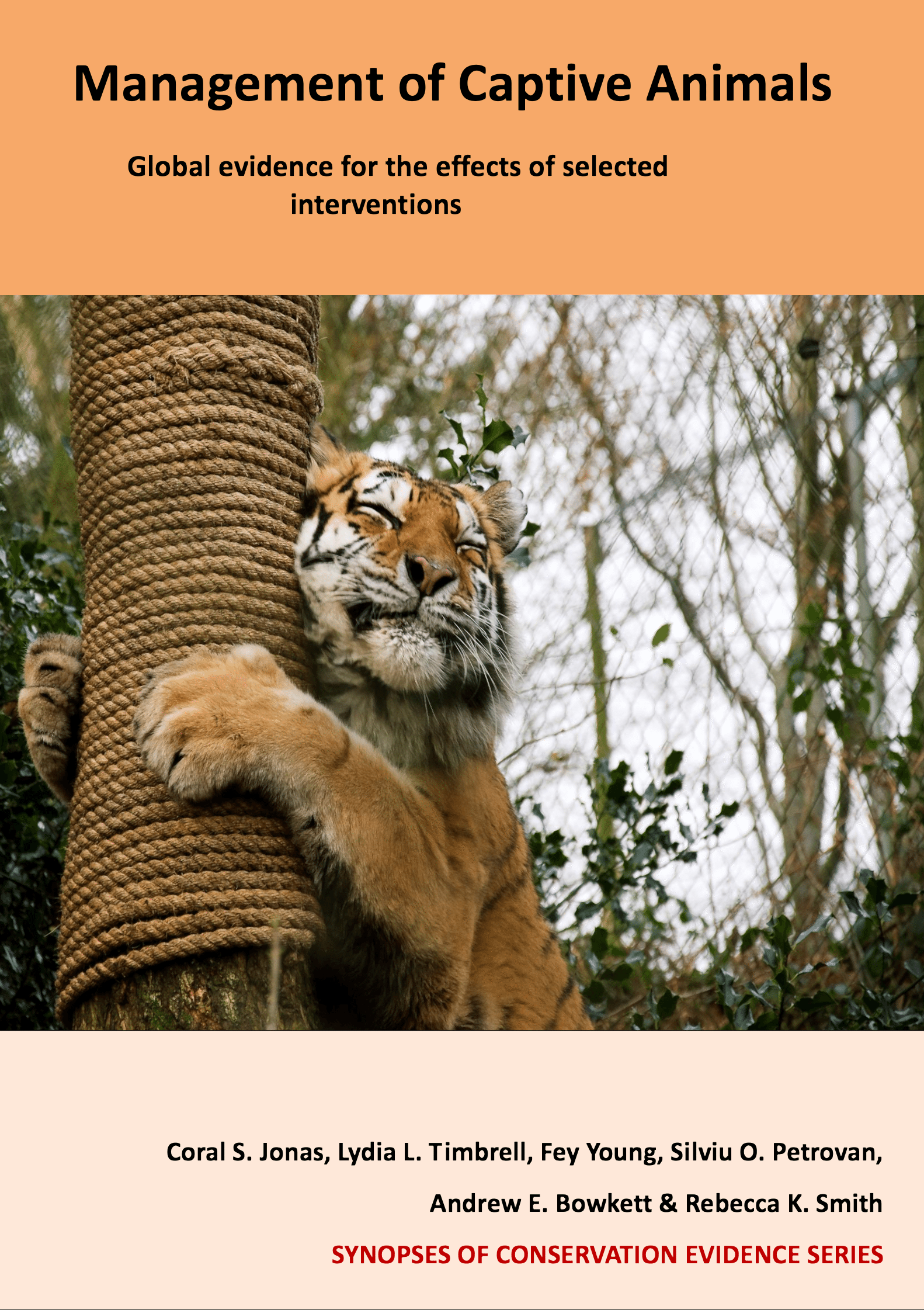Carnivores: Provide devices to simulate live prey, including sounds, lures, pulleys and bungees
Overall effectiveness category Trade-off between benefit and harms
Number of studies: 3
View assessment score
Hide assessment score
How is the evidence assessed?
Effectiveness
60%Certainty
50%Harms
25%
Study locations
Supporting evidence from individual studies
A small before-and-after study in 1977 of servals Felis serval in a zoo in the USA found that when provided with a lure and rewarded for hunting behaviour, activity levels of one female serval increased compared to no enrichment. When presented with a lure, the female’s activity levels increased (59.2 min/h) compared to no enrichment (18.2 min/h). Two females and one male, housed in an outdoor enclosure, were presented with a lure, which triggered the delivery of a food reward when struck. The food would come out at the far end of the run and would often get consumed by a different animal to that which struck the lure. One of the females died before the second study period. Two observation periods were performed one year apart. Frequency of jumping, contact with lure, food consumed, threat displays and general activity were recorded using one minute intervals for one or two twenty minute sessions per day and compared to session with no enrichment.
Study and other actions testedA small before-and-after study in 1996 on cheetahs Acinonyx jubatus in a zoo in the UK found that when a whole rabbit was presented on a pulley, behavioural diversity, time spent visible to the observer, and frequency of sprinting behaviour increased and feeding and affiliation behaviours decreased compared to feeding without the pulley. Behavioural diversity (1.74 Shannon Index), time visible (5%) and frequency of sprinting (data not reported) all increased and feeding (8%) and affiliation (26%) behaviours decreased compared to baseline data (behavioural diversity: 1.49 Shannon Index; time visible: 1%; feeding: 11%; affiliation: 24%). Two cheetahs housed together were fed one whole rabbit each once daily. Instantaneous focal sampling occurred at 30 second intervals and was undertaken one hour before, 20 minutes during cleaning and feeding and one hour after cleaning had finished. During the treatment, a whole rabbit was attached to the wire of the pulley system which moved around the enclosure on release. Baseline data was collected for ten days before the treatment, ten days during and five days post treatment. Cheetahs were trained for two weeks on chase and capture of moving bait before the study.
Study and other actions testedA small replicated, before-and-after study in 2006 of tigers Panthera tigris and cougars Felis concolor in a zoo in the USA found that when fed a partial carcass on a bungee, pacing behaviour decreased and walking behaviour increased in cougars, while the frequency of pacing and other behaviours increased in tigers compared to before providing a bungee carcass. In cougars, pacing behaviours decreased (6%) and walking behaviours increased (6%) when fed a carcass on a bungee compared to pre-enrichment (pacing: 32%, walking: 2.5%). Tigers showed an increase in pacing (8.5%) and ‘other’ behaviours (aggressive, social, interactive, stalking and jumping) (15%) compared to pre-enrichment (pacing: 4%; other: 11.5%). The tigers pacing behaviour increased during the first provision and decreased on the second provision, indicating the initial increase was due to unfamiliarity with the object. Faecal glucocorticoid metabolites did not vary throughout the testing period. Four felids, housed in pairs were fed a skinned deer rump individually on a 120 cm bungee cord. Behaviour was recorded every two minutes using instantaneous scan sampling over three hours, during pre- and post-treatment. Faecal samples were collected once a week for four months prior to treatment and twice a week from first treatment until one week after the second treatment.
Study and other actions tested
Where has this evidence come from?
List of journals searched by synopsis
All the journals searched for all synopses
This Action forms part of the Action Synopsis:
Management of Captive Animals
Management of Captive Animals - Published 2018
Captive Animal Synopsis




















